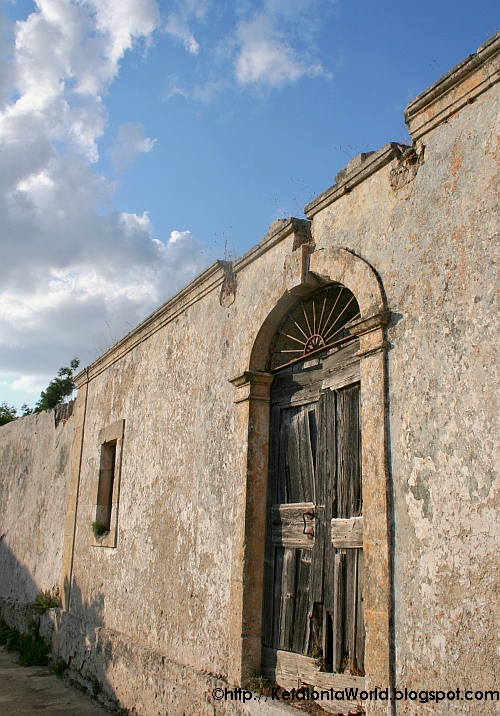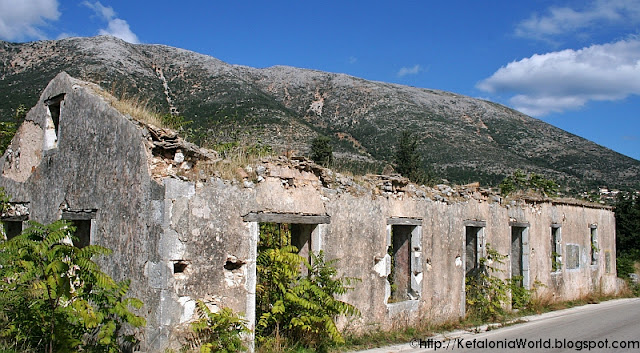 |
| Defiant geraniums thriving in the sun and dressing the wounds inflicted on a traditional Kefalonian home by the merciless earthquake of 1953 (Vlahata, Kefalonia) |
Recounting a traumatic past
It seems inappropriate for someone born after August of 1953 to write about the most devastating time for Kefalonia— not to mention the risk of sounding superficial.
So, I avoid writing about the massive earthquakes that literally destroyed the island.
Not that there haven't been first hand accounts—on the contrary, I've had plenty—as my parents, grandparents, uncles, aunts were all there. They've relayed detailed accounts of their own encounter with the force that made the earth roar and heave, again and again, until everything was reduced to piles of ruins, clouds of dust, heaps of pain, and unending streams of tears.
 |
| True resistance to the ravages of the elements and time (on the road to Fiskardo - Erissos, Kefalonia) |
❝I remember exactly where I was when the earth started to shake—❞
They all end their narrative with a list of names of loved ones or neighbors who were buried in the rubble, or were rescued from under it as if by miracle.
No family was spared, although some suffered losses far greater than the destruction of property. The hundreds of lives lost remain a perpetually open wound for the survivors, long after the homes, churches, schools were rebuilt and towns were reconstructed.
>>> 60 YEARS LATER <<<
Today, on the anniversary of the horrendous earthquake that caused more than ceilings to collapse and walls to crumble, I need to write about it for the first time.
I cannot write about the people who were lost, as my immediate family did not lose any members in the destruction.
But I can share with you some representative remnants of the beauty that was wiped out in a few seconds. Remnants of another time and another world, which, to this day, emerge here and there—defying gravity and the relentless passage of time—as reminders of resistance to hardships and triumph in the face of ultimate adversity.
And, of course, as non-designated but genuine memorials to all those souls who perished.
I cannot write about the people who were lost, as my immediate family did not lose any members in the destruction.
But I can share with you some representative remnants of the beauty that was wiped out in a few seconds. Remnants of another time and another world, which, to this day, emerge here and there—defying gravity and the relentless passage of time—as reminders of resistance to hardships and triumph in the face of ultimate adversity.
And, of course, as non-designated but genuine memorials to all those souls who perished.
 |
| What remains of the once magnificent church of St. Spyridon is still stunning—in architectural aesthetics and admirable resistance to gravity and the passage of time (Kastro, Kefalonia) |
 |
| Dispersed throughout Kefalonia— and hidden in village alleyways, waiting to be discovered— are some fine samples of traditional island architecture (Pessada, Kefalonia) |
 |
| Wst-facing window of the original church (Sissia Monastery, Kefalonia) |
 |
| Another sample of traditional architecture found on the road leading from Agia Efimia to Myrtos |
 |
| Remnants of the Archangels Church at Old Valsamata Village, Kefalonia |
 |
| Another alleyway, another gem (Pessada, Kefalonia) |
 |
| Ruins of the Dimitratos family cluster of homes at Xenopoulo, Kefalonia Nowadays, our own "daisy factory" |

Wonderful post, Eleni. Thanks for sharing these photos.
ReplyDeleteThank you Paul. The difficulty was in choosing what to include.
ReplyDeleteUnfortunately, some of these monuments will eventually be gone too due to neglect and lack of appreciation of their significance. :(